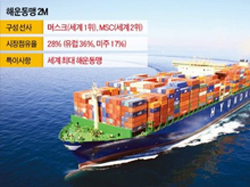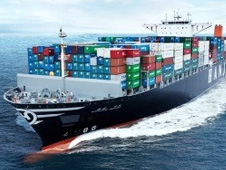U.S. Threatens Anti-dumping Tariffs on Washing Machines Made by in Samsung and LG in China
December 13, 2016 07:10lDecember 13, 2016 08:22
 The "Classics Reimagined" series, classical novels with paintings by famous
The "Classics Reimagined" series, classical novels with paintings by famous
A "Chinese Wave" is all the rage. Although the latest trend is not yet as widespread as the Korean Wave that has been going on for years in Asia, it is adopted fast by young Koreans in their late teens and 20s who buy Chinese-made smartphones and drones while enjoying Chinese foods.
 The "Classics Reimagined” series, classical novels with paintings by famous
The "Classics Reimagined” series, classical novels with paintings by famous
A "Chinese Wave" is all the rage. Although the latest trend is not yet as widespread as the Korean Wave that has been going on for years in Asia, it is adopted fast by young Koreans in their late teens and 20s who buy Chinese-made smartphones and drones while enjoying Chinese foods changing the landscape of college neighborhoods. In the alley The Chinese Wave is also changing the landscape of college neighborhoods. In the alleys of Shinchon near Yonsei University, many restaurants serving Chinese kebab, hot pot, and malatang have set up shop lately. A real estate agent in the area said, "There was only one mutton kabab place in Shinchon ten years ago. but 20 or so stores were newly opened for the last few years."
 The "Classics Reimagined” series, classical novels with paintings by famous
The "Classics Reimagined” series, classical novels with paintings by famous
A "Chinese Wave" is all the rage. Although the latest trend is not yet as widespread as the Korean Wave that has been going on for years in Asia, it is adopted fast by young Koreans in their late teens and 20s who buy Chinese-made smartphones and drones while enjoying Chinese foods.
The Chinese Wave is also changing the landscape of college neighborhoods. In the alleys of Shinchon near Yonsei University, many restaurants serving Chinese kebab, hot pot, and malatang have set up shop lately. A real estate agent in the area said, "There was only one mutton kabab place in Shinchon ten years ago. but 20 or so stores were newly opened for the last few years."
In the personal mobility market, Chinese-made items such as those sold by Xiaomi and Ninebot accou nt for more than 80 percent. Xiaomi dominates the segment for electric bikes while Ninebot in the are a of Segway and electric unicycles. In the domestic market for drones, China's DJI and Syma are taki ng commanding shares.
There are also a large group of young people who enjoy Chinese social networking services such as WeChat instead of Facebook or Twitter. This is because many young people came back from years of study in China and get used to using everything Chinese. The number of Korean students in Chinese universities has also risen to 58,120 last year from below the 50,000 level in 2013.
summit@hankyung.com
가계부채발(發) 폭풍이 몰려오고 있다. 갚을 형편은 생각지 않고 저금리에 기대 흥청망청 대출받아 쓴 ‘빚잔치’의 후폭풍이다. 14일(현지시간) 기준금리 인상 여부가 결정될 미국 중앙은행(Fed) 회의는 금리상승기 진입을 알리는 신호탄이 될 것이라는 관측이 줄을 잇고있다. 2011년 말 900조원을 넘어선 가계부채는 5년 만에 1300조원 수준으로 급증했다. 한국은행이 기준금리를 연 1%대로 낮춘 지난 2년간 늘어난 빚만 211조원이다.
금리 상승의 충격파가 어떤 경로로, 어느 정도 강도로 닥칠지는 가늠하기 힘들다. “경기 침체에 금리 급등까지 겹쳐 2008년 글로벌 금융위기에 맞먹는 충격이 닥칠 것”(신성환 한국금융연구원장)이라는 우려와 함께 “국지적 충격은 있겠지만 엄청난 위기로 치닫지는 않을 것” (김용범 금융위원회 사무처장)이라는 예상도 나온다. 하지만 상황이 나빠질 것 이란 데는 모 두가 한국경제신문이 개인신용평가 전문회사인 코리아크레딧뷰로(KCB)에 의뢰해분석한 금리 상승 충격은 예상보다 심각한 수준이다. 지난 6월 금융부채가 있는 1800여만명 가운데 빚 부담이 큰 고(高)위험 차입자는 약 133만 3000명에 달했다. 이미 소득의 40% 이상을 빚 상환에 쓰는 차입자들이다.
KCB는 내년 경기 회복이 지연돼 시장금리가 1%포인트 오르고, 주택가격이 2.4% 하락하면 고위험 차입자가 144만4000명가량으로 늘어난다고 추정했다. 경기 침체가 더 심각해져 금리가 2%포인트 오르고 주택가격이 8.6% 하락하면 고위험 차입자가 170만명으로 급증한다고 내다봤다. 김정인 KCB 부사장은 “금리 상승의 충격은 다중채무자, 자영업자 등에 직격탄을 가할 것”이라고 말했다.
가계부채 문제의 본질은 양(量)이 아니라 질(質)에 있다. 경기 침체 흐름을 감안할 때 가계부채의 질이 더 악화할 것이라는 게 전문가들의 일치된 분석이다. 한국개발연구원(KDI)은 내년 경제성장률을 당초보다 0.3%포인트 낮춘 2.4%로 제시했다.
◆특별취재팀=이태명 금융부 차장(팀장), 김은정 금융부 기자, 김유미 경제부 기자
금리 상승의 충격파가 어떤 경로로, 어느 정도 강도로 닥칠지는 가늠하기 힘들다. “경기 침체에 금리 급등까지 겹쳐 2008년 글로벌 금융위기에 맞먹는 충격이 닥칠 것”(신성환 한국금융연구원장)이라는 우려와 함께 “국지적 충격은 있겠지만 엄청난 위기로 치닫지는 않을 것” (김용범 금융위원회 사무처장)이라는 예상도 나온다. 하지만 상황이 나빠질 것 이란 데는 모 두가 한국경제신문이 개인신용평가 전문회사인 코리아크레딧뷰로(KCB)에 의뢰해분석한 금리 상승 충격은 예상보다 심각한 수준이다. 지난 6월 금융부채가 있는 1800여만명 가운데 빚 부담이 큰 고(高)위험 차입자는 약 133만 3000명에 달했다. 이미 소득의 40% 이상을 빚 상환에 쓰는 차입자들이다.
KCB는 내년 경기 회복이 지연돼 시장금리가 1%포인트 오르고, 주택가격이 2.4% 하락하면 고위험 차입자가 144만4000명가량으로 늘어난다고 추정했다. 경기 침체가 더 심각해져 금리가 2%포인트 오르고 주택가격이 8.6% 하락하면 고위험 차입자가 170만명으로 급증한다고 내다봤다. 김정인 KCB 부사장은 “금리 상승의 충격은 다중채무자, 자영업자 등에 직격탄을 가할 것”이라고 말했다.
가계부채 문제의 본질은 양(量)이 아니라 질(質)에 있다. 경기 침체 흐름을 감안할 때 가계부채의 질이 더 악화할 것이라는 게 전문가들의 일치된 분석이다. 한국개발연구원(KDI)은 내년 경제성장률을 당초보다 0.3%포인트 낮춘 2.4%로 제시했다.
◆특별취재팀=이태명 금융부 차장(팀장), 김은정 금융부 기자, 김유미 경제부 기자
WSJ ASIA
Korean investors
Latest News
-

[ASK 2016 SUMMIT] NPS offshore property purchase...
-
Most Urgent Task Facing Korea's Shipping Industry is to Address Its "Unreliable" Image
-

[ASK 2016 SUMMIT] NPS offshore property purchase...
-
Defense Ministry to Finalize THAAD Deployment by May Next Year
-
Foreign Investors Make Comeback with Focus on Electronic and Steel Stocks
-

[ASK 2016 SUMMIT] NPS offshore property purchase...
-
Deputy PM Job Still up for Grabs
-

[ASK 2016 SUMMIT] NPS offshore property purchase...



